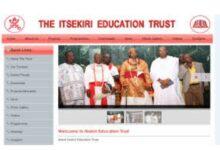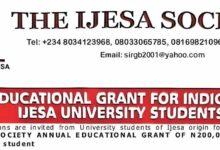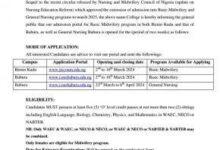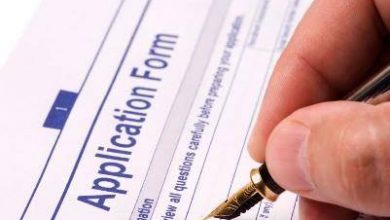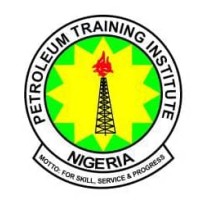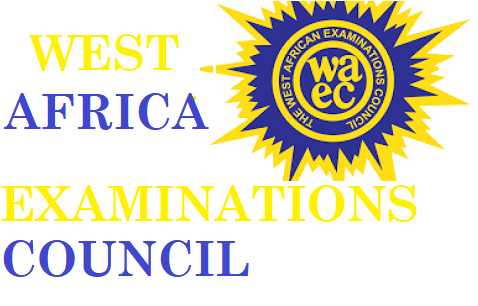
WAEC Syllabus for Welding And Fabrication Engineering Craft Practice
WAEC Syllabus for Welding And Fabrication Engineering Craft Practice. WAEC Syllabus for Welding And Fabrication Engineering Craft Practice is available for all candidates who want to participate in the examination. The West African examination council (WAEC) has officially introduced a syllabus that will guide all the WAEC candidates who wish to write the WAEC examination this year. For a very successful WAEC Welding And Fabrication Engineering Craft Practice examination for this year, you need to check out the available areas of concentration. It has been divided into sections with chapters, followed by the topics to be covered in preparation for the exams. In the WAEC Syllabus for Welding And Fabrication Engineering Craft Practice, you will also see the format of how the WAEC Welding And Fabrication Engineering Craft Practice questions will be presented. Npower Recruitment
There are 3 sections to answer questions from. Paper 1 is Objective and paper 2 contains essay questions and paper 3 is the practical section. Where paper one (1) carries 1 hour for 40 marks; paper two (2) carries 1½ hours for 60 marks and paper 3 is 3 hour 100 marks. Waec Result
👉 Relocate to Canada Today!
Live, Study and Work in Canada. No Payment is Required! Hurry Now click here to Apply >> Immigrate to Canada
This WAEC syllabus is for both the O’level WAEC and General Certificate Examination (GCE) candidates. Final year students in the senior secondary school level and external candidates are eligible to make use of this syllabus and prepare ahead of the examination. WAEC Syllabus for Welding And Fabrication Engineering Craft Practice
See the full detailed information concerning the WAEC Welding And Fabrication Engineering Craft Practice Syllabus below. Jamb form
SCHEME OF EXAMINATION
There will be three papers, Papers 1, 2 and 3, all of which must be taken.
Papers 1 and 2 will be a composite paper to be taken at one sitting.
Paper 1: will consist of forty multiple-choice objective questions all of which are to be answered in 1 hour for 40 marks. Dollar to Naira Rate
Paper 2: will consist of five questions out of which candidates will be required to answer any four in 1½ hours for 60 marks.
Paper 3: will be practical test of 3 hours, 10 minutes duration. It will consist of one compulsory question for 100 marks. Pounds to Naira
👉 Relocate to Canada Today!
Live, Study and Work in Canada. No Payment is Required! Hurry Now click here to Apply >> Immigrate to CanadaA list of materials for the test shall be made available to schools not less than two weeks before the paper is taken for material procurement and relevant preparations.
ALTERNATIVE TO PRACTICAL TEST
The Council may consider testing candidates’ ability in practical work as prescribed in the syllabus in the event that materials for the actual practical test cannot be acquired. For this alternative test there will be one question to be answered in 3 hours for 100 marks. Jamb form
DETAILED SYLLABUS
| S/NO. | TOPIC | CONTENT | PRACTICAL |
| 1 | Workshop and standard workshop practices. | 1.1. Introduction to fabrication and welding practice. 1.2. Safety precautions in welding and fabrication workshop. – Types and causes of accident in the workshop (fire, explosion, sharp objects, hazardous gases, etc). – Accident prevention measures. – Types and causes of environmental pollution. – Methods of preventing environmental pollution. – Safety facilities and protective wears. 1.3. Workshop layout (fabrication and welding). 1.4 . Standard welding codes and symbols. 1.5. First-Aid administration in the workshop. |
1.2.1. Demonstration of the use of protective wears in welding and fabrication.
1.5.1. Demonstration of the use of first aid in the workshop. |
| 2 | Properties of metals and selection. | 2.1 Ferrous and non-ferrous metals (steel, aluminum, cast iron, copper and zinc, tin, alloy steel). 2.2. Properties of metals (ductility, hardness, toughness, malleability, fusion and tenacity, brittleness, elasticity and plasticity). 2.3. Sheet metal (aluminum, mild steel, brass) – concept of sheet metal – gauges of sheet metal 2.4. Selection of suitable metals for specific jobs. Jamb Result |
2.1.1 Identification of ferrous and non-ferrous metals. |
| 2.5 Heat treatment of metals (hardening, annealing, normalizing, tempering and case-hardening, etc.) |
2.5.1. Annealing, Hardening and Normalizing of metals |
||
| 3 | Tools and Equipment in Fabrication and Welding. | 3.1. Identification of tools and equipment for fabrication and welding.
3.2. Equipment set-up for gas, arc welding and fabrication. 3.3. Job holding devices for fabrication and welding. 3.4. Measuring instruments, marking out and cutting tools.
3.5. Identification of parts and accessories for gas and arc welding.
3.6. Maintenance procedure for arc and gas (oxy-acetylene) welding equipments. 3.7. Preparation of acetylene gas from carbide. 3.8. Types of electrodes and their composition, their application, gauges of electrodes, selection of appropriate electrode for a specific job. 3.9. Equipment for fault detection and trouble shooting in fabrication and welding. |
3.1.1. Student to set up oxy-acetylene equipment
3.4.1. Demonstration of the use of measuring, marking out and cutting tools. 3.5.1. Demonstration of the preparation of acetylene gas from carbide. |
| 4 | Operations and Techniques in Welding and Fabrication. | 4.1. Types of welding (Gas and Arc welding), explanation of the principles of gas and arc welding and their differences
|
|
| 4.2. Description of a typical fabrication process. 4.3. Types of joints, joint methods and application in welding and fabrication 4.4. Classification of marking out techniques in welding and fabrications. 4.5. Description of the use of templates for fabricated and welded assemblies. 4.6. Welding techniques and application.
4.7. Techniques in fabrication work – Description of folding techniques and its importance in fabrication work. |
4.3.1. Demonstration of various jobs cutting techniques.
4.6.1. Students to weld using both leftward and rightward methods. 4.7.1. Students to work on wire-edge projects. |
||
| 5 | Fasteners
(a) Classification of fasteners. (b) Rivet and its application (c) Bolt and nuts (d) Screws |
5.1. Permanent fasteners.
5.2. Temporary fasteners. 5.3. Types of rivets. 5.4. Uses of rivets. 5.5. Description of bolts and nuts. 5.6. Uses of bolts and nuts 5.7. Classes of rivets and screws. |
5.4.1. Students to produce rivets joints. 5.5.1. Students to produce bolts and nuts. |
| 6 | Forging Process – Introduction to forging |
6.1. Definition of forging
6.2. Forging tools and equipment (furnace, swages, fullers, flatters and tongs). 6.3. Forging process – upsetting. – drawing down – twisting – bending – forging an eye. |
6.3.1. Students to form an eye. |
| 7 | Preparation of welding surfaces and environment. | 7.1. Preparation of welding surfaces by cleaning with wire brush, emery cloth, files, scrappers and | |
| grinding machine.
7.2. Preparation of edges for welding e.g. single V, double V, fillets. 7.3. Post surface preparation – cleaning surface with wire brush – oiling surface to protect from corrosion or rusting. 7.4. Defect in welding surfaces (causes and remedies). 7.5. Definition of welding environment – awkward, unventilated, flammable material – slipery floor (oil/grease on floor) 7.6. Surface furnishing for fabrication and welding (painting, metal spraying, galvanizing and oiling). |
7.2.1. Preparation of single V surface for welding. |
||
| 8 | Practical Work/Project | 8.1. Marking of shapes (triangle, square and rectangle).
8.2. Cutting and bending of triangles, square and rectangles. 8.3. Soldering of sheet metals 8.4. Welding of steel using arc welding. 8.5. Welding of steel using gas welding. 8.6. Fabrication of ferrous and non-ferrous metals into required shapes. 8.7 Suggested projects (students to produce the following): – named plate – trinket box – funnel – kitchen stool – car stopper – metal rake |
|
| – scoop
– hinges – charcoal stove, etc. |
|||
| 9 | Business Entrepreneurship Opportunity | 9.1. Definition of
– entrepreneurship – employer – employee. 9.2 Enterprises – small scale enterprise – medium scale enterprise – large scale enterprise 9.3. Factors for setting a workshop (cost, site, weather, material, manpower, market, source of power, transportations. |
9.3.1. Site visitations to existing enterprise (small, medium or large scale enterprise) |
LIST OF FACILITIES AND MAJOR EQUIPMENT/MATERIALS REQUIRED:
| S/N | QTY | S/N | QTY | S/N | QTY | S/N | QTY | ||||
| 1 | Hammers
(various types) |
20 | 17 | Bending rollers | 1 | 33 | Combined set of cutting
welding outfits |
5 | 48 | Bench grinding Machine | 2 |
| 2 | Try squares | 20 | 18 | Bench mounted cone roller | 1 | 34 | Regulators with flow meters | 6 | 49 | Electrode Holders | 10 |
| 3 | Chisels | 15 | 19 | Bench shares | 2 |
35 |
Water to carbide generator |
1 |
50 | Electrode drying oven | 1 |
| 4 | Punches | 15 | 20 | Power hacksaw | 1 | 51 | Pillar Drilling Machine | 2 | |||
| 5 | Hand gloves | 30 | 21 | Vee blocks | 5 | 36 | Anvil | 3 | 52 | Smith open forge | 1 |
| 6 | Straight edges | 20 | 22 | Aprons | 50 | 37 | Swage block | 1 | 53 | Vice (bench) | 20 |
| 7 | Trammel drivers | 5 | 23 | O2 CYLINDERS | 3 | 38 | Chipping hammers | 10 | 54 | Bench type grinding Machine | 2 |
| 8 | Left and right snips | 20 | 24 | Transformers with rectifiers | 5 | 39 | Flatters | 5 | 55 | Double ended buffer and polisher | 1 |
| 9 | Straight snips | 15 | 25 | Hand shield and Head caps | 10 each | 40 | Mole grip | 5 | 56 | Blow pipes (low and high pressure) | 2 |
| 10 | Rule, Scriber and dividers | 20 each | 26 | Gas welding goggles | 10 | 41 | Sledge Hammers | 5 | 57 | Files assorted | 100 |
| 11 | Hand nibbling machine | 5 | 27 | Double cylinder Trolley | 5 | 42 | Plain goggles | 20 | 58 | Acetylene Cylinder | 3 |
| 12 | Wire brushes | 50 | 28 | Oxygen regulators | 5 | 43 | G – clamp | 5 | 50 | Parallel Clamp | 5 |
| 13 | Pliers-assorted | 20 | 29 | Acetylene regulators | 5 | 44 | First-aid box | 2 | 60 | Toolmakers clamp | 5 |
| 14 | Tongs Assorted | 15 | 30 | Hoses, Clips and all attachments accessories |
10 |
45 | Magnetic clamp | 2 | 61 | Mallets | 5 |
| 15 | Hacksaws and blades | 60 | 31 | DC generators with all connections | 5 | 46 | Self grip pliers | 5 | 62 | Work bench | 10 |
| 16 | Guillotine | 1 | 32 | AC Transformers | 5 | 47 | Folding bars | 2 | 63 | Fire Extinguisher | 4 |
| 64 | Sand bucket | 4 | |||||||||
| 65 | Cramp Folding Machine | 20 | |||||||||
| 66 | Riveting Pliers | 5 | |||||||||
| 67 | Riveting set | 2 |
RECOMMENDED BOOKS
| S/NO. | BOOKS | AUTHOR |
| 1
2 3 4 5 6 7 |
Welding and Fabrication
The Science and Practice of Welding Fabrication and Welding Basic Welding The Theory and Practice of Metalwork Metal Craft Theory and Practice Metalwork Motivate Series |
W. Kenyon
A. C. Davis F. J. M. Smith P. Somsky George Love John R. Bedford J. K. N. Sackey & S. K. Amoakohene |
| 8
9 10 |
Metalwork Technology
Workshop Processes and Materials Ilesanmi Metalwork for Senior Secondary School Books 1 – 3 |
G. H. Thomas
J. V. Courtney Adejuyigbe S. B. and S. K. Akinlosose |
| 11 | Practical Welding Motivate Series | S. W. Gibson and
B. K. Amoako-Awuah |
Check and Confirm: How much is Dollar to Naira Pounds to Naira Rate Today
